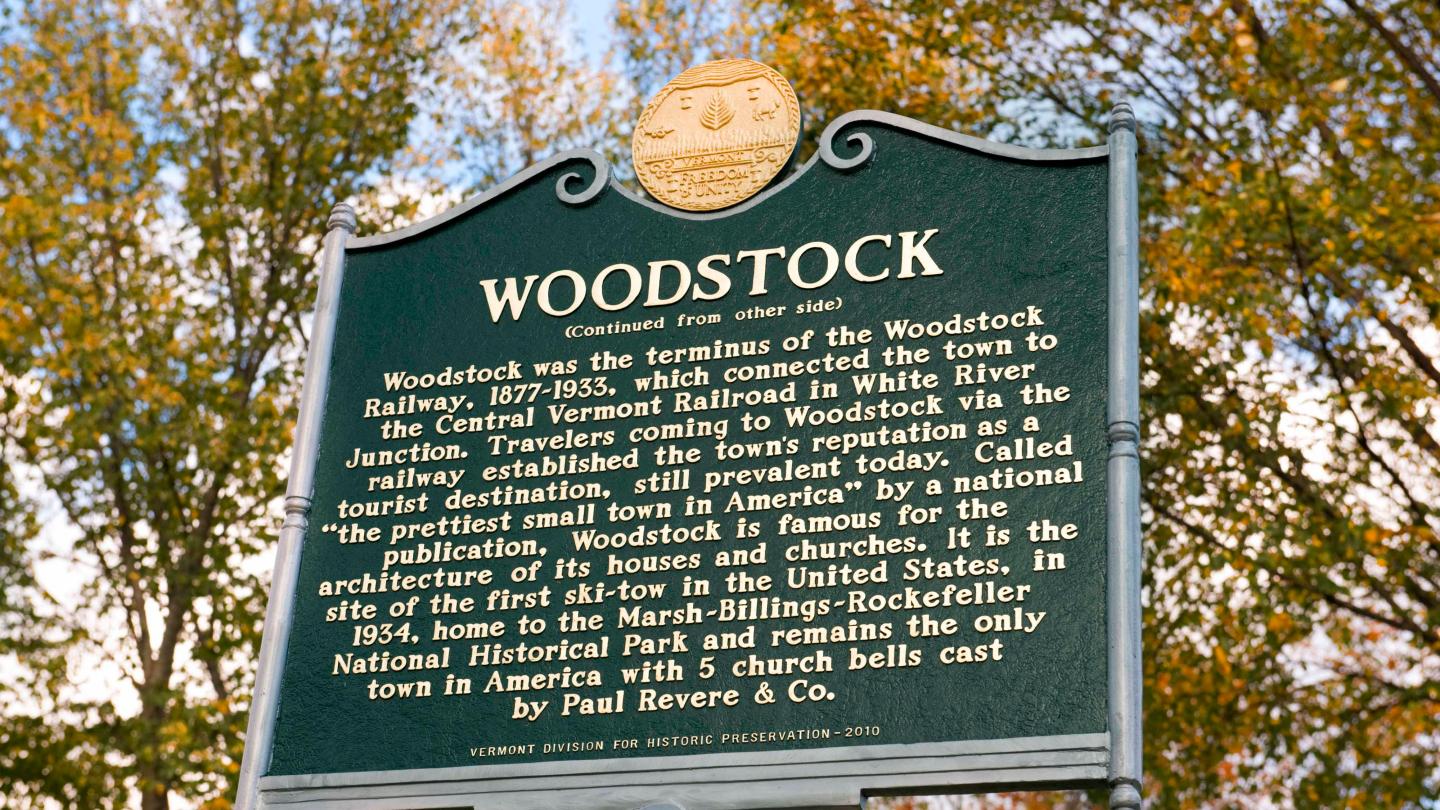About Woodstock, Vermont
The “prettiest small town in America,” Woodstock is the idyllic town you’ve dreamed of, whether as a vacation spot that provides something fun for everyone, or as the perfect place to start a business, work remotely or raise a family. It is the quintessential New England village, with a quaint main street home to galleries, general stores, boutiques and restaurants. Its beautifully-preserved Federal homes and buildings set the stage for its stunning setting, many of which were lovingly preserved by the Rockefellers and Frederick Billings, some of the town’s most influential benefactors.
Businesses in Woodstock are nearly all locally-owned, which means its residents are truly invested in maintaining the town’s many attractions for new neighbors and tourists alike. Visit for the local cuisine, bucolic beauty, local ski areas and golf courses and the thriving arts community. But, stay and live here for the welcoming community, outstanding school system, and the homes whose prices are a pleasant surprise to anyone hailing from local metro areas.
Location
Woodstock is just a short drive from major metro areas, including Boston (3 hours) and New York City (5 hours). Visitors can take I93 to I89 North to Vermont, and Woodstock is just 10 miles off of the interstate.
Population
3,048 (2010 census), which includes the towns of South Woodstock, Taftsville and Woodstock.
Living and Working Here
Whether you’re an executive for a major corporation, you own a business serving clients nationally like Wild Apple Graphics, or you start a local restaurant like the owners of Mangalista, Woodstock is the perfect place to work, live and raise a family. Learn more about relocating here to raise your family or start your business here.
Public Schools
Woodstock Elementary School and Woodstock Union High School & Middle School. Woodstock Union High School was awarded the national silver medal and ranked #6 in the state and #1,207 nationally out of 21,776 schools in the U.S. News Best High Schools 2012 rankings.
Attractions
Billings Farm and Museum: The land and farmhouse were owned by Laurance Rockefeller and his wife Mary French Rockefeller. The farm and museum include an operating dairy farm and a restored 1890 farm house. Get to know the farm through interactive programs and activities, and experience first-hand sampling of actual farm work, animals, and agricultural processes.
Sugarbush Farm: Sugarbush Farm is famous for its excellent waxed cheeses and Pure Vermont Maple Syrup made on its hillside farm. Learn about maple syrup making with a sugar house tour, walk the nature trail to see the sugar maple trees, and get up close with the farm animals.
Marsh-Billings-Rockefeller National Historical Park: The only U.S. national park in Vermont, the park preserves the site where Frederick Billings established a managed forest and a progressive dairy farm. The name honors Billings and the other owners of the property: George Perkins Marsh, Mary Montagu Billings French, Laurance Rockefeller, and Mary French Rockefeller.
Covered Bridges: Woodstock is the site of three historic covered bridges, including Taftsville Covered Bridge (1836), Middle Covered Bridge (1969) and Lincoln Covered Bridge (1877).
Mount Tom and the Pogue Trail: Hiking in Woodstock is abundant! The Pogue Trail is a 5+ mile loop trail accessible from Woodstock, perfect for hiking, trail running, and snowshoeing.
Saskadena Six Ski Area: Woodstock was the site of the first ski tow in the U.S. and its history with skiing is evident in its local ski mountain. Suicide Six has easy-riding terrain perfect for families and beginners, and welcomes skiers and snowboarders of all abilities. It’s also home to the first National Snow Snurfing contest in 1982 and was one of the country’s earliest ski resorts to allow the sport that would become snowboarding.
Woodstock Town Hall Theatre: The historic Town Hall Theatre hosts movies and art performances throughout the year put on by the Pentangle Arts organization. From movie screenings, to performances from world class musicians, the theatre is the hub of the downtown Woodstock arts community.
Woodstock Farmers’ Market: The Farmers' Market is a year round venue for the freshest local food. From take-out prepared dinners and lunches, milk and eggs, fresh organic produce, fresh meats, and everything in between.
Lodging
Woodstock boasts a variety of lodging options that are open year-round, from cozy inns like the Jackson House Inn and Lincoln Inn and Restaurant at the Covered Bridge, to grand hotels including the Woodstock Inn and Resort. Learn more at www.woodstockvt.com/lodging.
Dining
Visitors and residents in Woodstock can enjoy dining experiences ranging from casual at the Worthy Kitchen, to fine dining at the Lincoln Inn and Restaurant at the Covered Bridge. A fairly comprehensive listing can be found here.
History
Woodstock, Vermont was chartered by New Hampshire Royal Governor Benning Wentworth on July 10, 1761. It was named the Shire Town of Windsor County in 1766 and quickly became a prosperous manufacturing and commercial center. Woodstock was the terminus of the Woodstock Railway, 1877-1933, which connected the town to the Central Vermont Railroad in White River Junction. Travelers coming to Woodstock via the railway established the town's reputation as a tourist destination. The town has been home to George Perkins Marsh, environmentalist; Frederick Billings, railroad empire builder; Senator Jacob Collamer, advisor to President Abraham Lincoln; and Laurance Rockefeller, conservationist and philanthropist. It was the birthplace of Hiram Powers, noted sculptor of "Greek Slave". From 1826 to 1856, it hosted one of only six medical colleges in New England, the Vermont Medical College. It remains the only town in America with six church bells cast by Paul Revere & Co.

